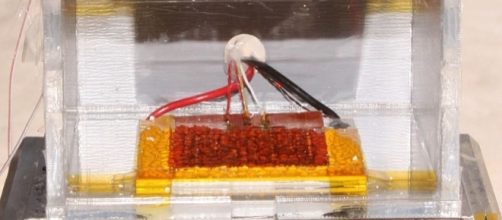Researchers from the University of California, Berkeley teamed up with the Massachusetts Institute of Technology have come up with a brand new way to turn water vapor into liquid water. While this is not the first technology invented to do the job, these researchers say their idea uses less power than existing techniques and also works in much drier environments.
Metal-organic framework to extract water from the air
Reportedly the new technique makes use of a substance known as a metal-organic framework, or MOF. Their approach uses metallic materials, mixed together with organic compounds to do the job.
According to Forbes, the MOF powders are very porous, leading researchers to propose using these to store methane or hydrogen fuels and to capture carbon dioxide.
It was Evelyn Wang from the Massachusetts Institute of Technology, together with Omar Yaghi from uc berkeley, that came up with the idea to use MOFs to capture water in thin air. However, reportedly the MOF powders not only have the ability to suck up liquid water, but can also absorb water vapor. It seems that even the driest areas on Earth have plenty of water molecules floating around, making this the ideal technique to use in dry, desert areas.
Small prototype water collector works well
According to Wang, they built a small prototype of the water collector, containing a thin layer of the MOF powder, which then absorbs the water vapor until it is saturated.
She said that once the maximum amount is achieved, you just need to apply some kind of heat to the water collector to release the water. That water then collects in the bottom of their prototype.
A very cool project out of MIT/UC Berkeley--harvesting water from the air using solar power and MOFs: https://t.co/WnXaZezzUF#science #tech pic.twitter.com/PgKekZlVlf
— Ryan Mansergh (@n3ur0) April 14, 2017
Comparing their new technique to the previous ideas using zeolites, Wang says it would take a significant amount of energy for those materials to release water.
She said the MOF device requires much less energy to run. In fact, according to Wang, their prototype uses the heat from ambient sunlight to extract the water vapor and there is no need for an external power source.
Their findings were published in the journal Science, where Wang says she and her colleagues tested the new MOF-based prototype on the roof of an MIT building and it reportedly worked just fine.
However, she did say this is just a prototype, which used only a fraction of an ounce of MOF powder, meaning that the amount of water collected was also pretty small. Wang calculates that a full-sized system based on their technique could deliver almost three quarts of water daily, using around two pounds of the MOF powder. According to Wang, scaling up their new MOF device prototype wouldn’t be particularly expensive and that while MOFS are relatively new, there are companies available that already make MOFs on large bulk scales.
It will be a while before the new technique becomes available on a mass-produced scale, however, as so far it has not been shown whether the MOF powder technique is contaminant-free.
However, once developed, the new technique could be used in some of the driest places in the U.S., like Death Valley.
The UC Berkeley video below imagines a future where every home will have an appliance to pull all a household’s water requirements out of thin air – even in desert climes – using only the power of the sun.

